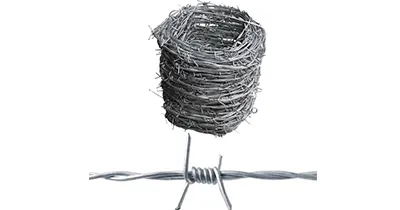-
 Phone:
Phone: -
 Email:
Email:

High-Quality Copper XLPE SWA PVC Cables for Industrial and Residential Applications
Understanding Cable Specifications Copper XLPE SWA PVC
In the world of electrical engineering, the choice of cables for power distribution and transmission plays a critical role in ensuring the safety, efficiency, and reliability of electrical systems. Among various cable types available on the market, one that stands out due to its enhanced properties is the Copper XLPE SWA PVC cable. Each part of this designation reflects specific characteristics that make the cable suitable for various applications.
Copper Conductor
The use of copper as a conductor material is one of the primary advantages of this cable type. Copper is highly regarded for its excellent electrical conductivity, which is second only to silver. This feature allows for efficient transmission of electrical current with minimal energy loss. Additionally, copper also offers significant mechanical strength, making it durable and capable of withstanding stress and strain in demanding environments. Its corrosion resistance further prolongs the lifespan of the cable, ensuring reliability over time.
XLPE Insulation
The term XLPE stands for cross-linked polyethylene, and it refers to a type of insulation used in the cable construction. XLPE is a thermoset type of polyethylene that offers superior thermal resistance, allowing the cable to operate at higher temperatures without degradation. This characteristic is essential in scenarios where heat is generated due to electrical load. Moreover, XLPE insulation provides excellent dielectric strength, which helps prevent electrical faults and failures.
Understanding Cable Specifications Copper XLPE SWA PVC
SWA Armoring
cable cu xlpe swa pvc

The SWA in the cable designation stands for Steel Wire Armour. This component is added for mechanical protection, particularly important in environments where cables may be subject to physical damage, such as in industrial or outdoor settings. The steel wire armoring acts as a robust barrier against impact and pressure, shielding the inner conductors and insulation from potential harm.
The addition of SWA also aids in preventing rodent damage, a common threat to underground cables, as pests may chew through standard insulation materials. By providing this layer of protection, it enhances the safety and reliability of electrical systems, allowing for installations in a variety of challenging conditions.
PVC Sheathing
Finally, the last component, PVC, refers to the sheathing material that encases the entire cable. Polyvinyl Chloride (PVC) is widely used due to its excellent mechanical and chemical resistance properties. The PVC sheath provides additional protection from environmental factors such as moisture, abrasion, and UV radiation, making the cable suitable for outdoor applications.
Another benefit of PVC sheathing is its flame retardant properties, which enhance the safety of installations by reducing the risk of fire spreading in the event of an electrical fault. This characteristic is particularly important in residential and commercial buildings, where fire safety is a primary concern.
Conclusion
In summary, Copper XLPE SWA PVC cables offer a combination of excellent electrical conductivity, superior insulation properties, robust mechanical protection, and durable sheathing. These attributes make them ideal for various applications, including residential, commercial, and industrial settings. Choosing the right cable is crucial for ensuring the efficiency and safety of electrical systems, and understanding the specifications of cable types like Copper XLPE SWA PVC can help engineers and decision-makers make informed choices for their projects.
-
Wire Mesh for Every Need: A Practical SolutionNewsJul.25,2025
-
Steel Fences: Durable, Secure, and Stylish OptionsNewsJul.25,2025
-
Roll Top Fencing: A Smart Solution for Safety and SecurityNewsJul.25,2025
-
Cattle Farm Fencing Solutions for Maximum SecurityNewsJul.25,2025
-
Affordable Iron Binding Wire SolutionsNewsJul.25,2025
-
Affordable Galvanized Wire SolutionsNewsJul.25,2025
-
Wire Hanger Recycling IdeasNewsJul.25,2025








